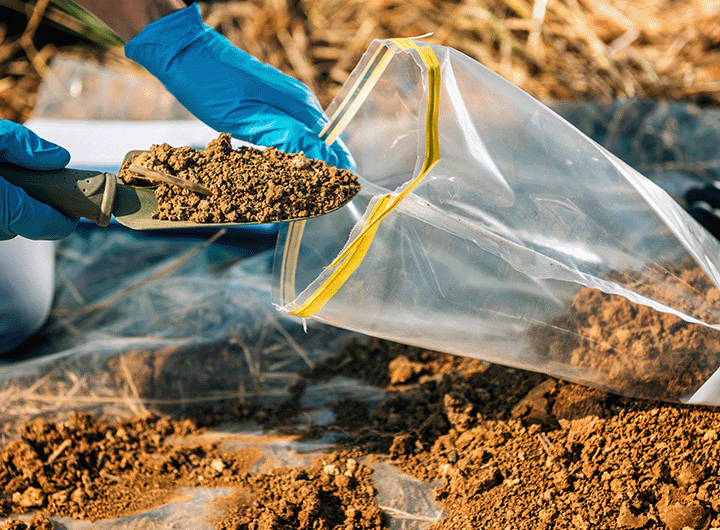Thought Leadership
Incremental Sampling Methodology

Incremental Sampling Methodology is becoming a go-to approach – for responsible parties and regulators alike – for efficient and robust contaminant characterization. While the method is fairly established for soil characterization, the use of incremental sampling methodology for sediment characterization is gaining acceptance. This is demonstrated by the Washington State Department of Ecology’s (Ecology) new Sediment Cleanup User’s Manual https://fortress.wa.gov/ecy/publications/documents/1209057.pdf referencing techniques developed by MFA.
Incremental sampling methodology is a technique designed to statistically reduce or limit the variability that can be associated with discrete sampling techniques. Incremental sampling methodology provides unbiased, representative and reproducible estimates of the mean concentration of analytes in a specific area of interest, called a “decision unit.”
On the surface, incremental sampling methodology might be confused with more traditional compositing techniques incremental sampling methodology differs from typical composite sampling in several ways: (1) the number of individual aliquots (grabs) of soil is much greater, (2) the compositing scheme is rigorous and depending on the data quality objectives, may involve sieving, grinding, and sub-sampling sediment, and (3) the combined grabs represent the entire decision unit.
While incremental sampling methodology improves chemical resolution through collection of many increments, project costs may be reduced due to fewer analyses. This is particularly true when the more expensive analyses are required, such as dioxin or polychlorinated biphenyl congener analysis, as is frequently the case at sediment sites.
Sampling design is important. Site-specific considerations such as bottom substrate and water depth may require fabrication of specialized sampling equipment. MFA scientists and engineers have developed specialized tools that can be deployed over-water to obtain reproducible volumes of material in a variety of environments.
The concept of incremental sampling methodology and decision units is readily applied in human health and ecological risk assessment, where having a high level of confidence in chemical concentrations across an exposure area is generally understood to be a critical component of the assessment. But application of incremental sampling methodology goes beyond risk assessment; MFA applies the method to characterize the nature and extent of contamination, delineate remedial action units, and for post-remedial monitoring. For example:
- At a ship-yard, incremental sampling methodology revealed impacts were constrained primarily to nearshore areas more amenable to remedial action. Contaminant nature and extent evaluation showed higher variability of risk-driving contaminants such as tributyltin, but provided precise determination of other contaminants such as metals.
- In a National Wildlife Refuge, incremental sampling methodology supported remedial action for permanently inundated areas only, reducing the potential dredge footprint and resultant disposal volumes; low chemical variability was observed even though only 10 increments per replicate were collected.
- As referenced in Ecology’s Sediment Cleanup User’s Manual (https://fortress.wa.gov/ecy/publications/documents/1209057.pdf ) for a high-profile cleanup site in downtown Portland, Oregon, incremental sampling methodology monitoring resulted in contaminant concentrations nearly identical to those expected based on area-weighted geospatial analysis, indicating that the significantly smaller (and more cost-effective) analytical data set sufficiently characterized post-remedial concentrations.
Successful use of incremental sampling methodology is driven by careful and robust sampling plan development, early involvement of regulatory agencies, and use of custom field sampling equipment when existing solutions prove inadequate. Each site has unique physical environments and chemical profiles necessitating that field sampling methods and sample processing and analysis be tailored to maintain incremental sampling methodology result integrity.



